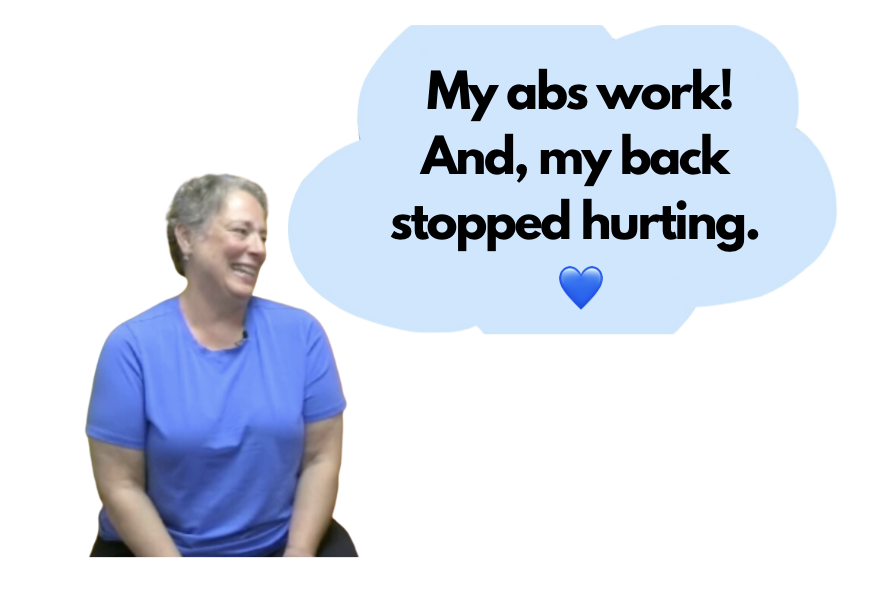Stretching? Sue’s Wasn’t Helping Much Anymore. Now What?
Movement is so important to maintaining or improving our health!
Stretching? It may help, but finding the root cause of the tightness or pain is the real opportunity.
Sue’s story is the perfect example, which also shows how well the body can disguise its compensations.
Read on …
Getting to the Root of Sue’s Back Pain
For years, Sue lived with persistent back pain. Chiropractic and massage offered temporary relief, but the fear of pain always lingered. She loved walking in her neighborhood and tending to her garden, but every activity came with hesitation — would this make it worse?
“I felt like I had a divided body. My left side had so much pain, and my right had none. I wanted to be moving, but everything hurt.”
Stretching had been her go-to solution, but it wasn’t helping as much anymore. Frustrated, she confided in a friend, who suggested something new. That conversation in January 2022 led Sue to the Bridging® Institute, and set the stage for today’s story.
(We recently explored why stretching alone often falls short in relieving pain and how uncovering the root cause can lead to lasting relief. You can read that newsletter here.)
Finding the Missing Link
Sue and I met for her first session, and it didn’t take long to uncover a critical clue. She had a favorite twisty stretch that often eased her pain, but it wasn’t quite enough to solve it. With each session she had improvement, but the basic Bridging® goal of symmetry seemed to be elusive.
Her progress wasn’t always linear. Occasionally, overdoing activities around the house or in the garden would trigger her back pain. Trying to resolve one of those episodes surfaced a key relationship — she had a flat, tight spot in the middle of her spinal muscles at the fulcrum of the big, twisty stretch. The compacted muscles restricted movement in just the ways that were leading to the pains.
Supporting that spot during our sessions changed everything. It allowed Sue to move more easily and reduced the tension causing her pain. Our focus shifted to connecting her micromovements to that tight spot—and then through it.
If you’re a long time reader, you’re wondering what’s the forgotten injury or surgery.
There wasn’t any. After some reflection we each concluded this was likely original. Maybe a critical few hours of her spinal column development got derailed as a neonate?? We’ll never know for sure, but we’ve been busy rebuilding all sorts of movements in her core.
Unlocking Core Power
By September, Sue had made incredible progress. She began the session by demonstrating a Pilates movement that she struggled with. We broke the movement down into pieces and discovered her core muscles weren’t working together properly.
You guessed it. The culprit was the spot on her spinal musculature that wasn’t letting her abdominal and back muscles pair up. The compensatory movement was creating strain.
We came up with a supported approach to guide her muscles into the movement instead of skipping into her compensations. Slowly, her core began to function as it should. It was almost like we fashioned psuedo-jumper cables to connect the neuropathways. So cool!
The result? Sue could roll up and roll down through her Pilates movement with ease she had never experienced before. As her abdominal muscles started working automatically, her back muscles relaxed — finally relieving her of the constant tension.
The “Aha” Moment: Why Sue’s Abs Weren’t Engaging
Our bodies rely on natural muscle sequences to support effortless movement. One such sequence looks like this:
- Lifting the head triggers compression in the upper chest.
- This compression activates the diaphragm.
- The diaphragm’s movement contracts the abdominal muscles.
For Sue, this sequence wasn’t happening because of the spot of tight back muscles disrupted the symmetry of movement in a major way. By supporting her back and guiding her through the proper sequence, her body re-learned how to activate her core properly. A few repetitions to reinforce the muscle memory made all the difference.
You can see Sue’s radiant smile and hear her full story in this short video. Her joy is contagious — you won’t want to miss it!
Three weeks later …
Sue shared this observation:
“Moving around every day, my abs are engaging in a new way. It doesn’t hurt my back to sit up straight anymore.”
Could This Be You?
Sue’s story might sound unique, but it’s more common than you’d think. Her challenges likely stemmed from developmental issues long ago. But these disruptions can happen to anyone due to:
- Injuries: Auto accidents, falls
- Medical procedures: Removal of gallbladder or appendix, hernia repair, C-sections
- Illnesses: IBS, pneumonia
- Early life events: Premature birth, C-section delivery, NICU stays
The good news? Just like Sue, your muscle coordination can be restored. You (or your child) can move with ease, stand taller, and live without fear of pain.

